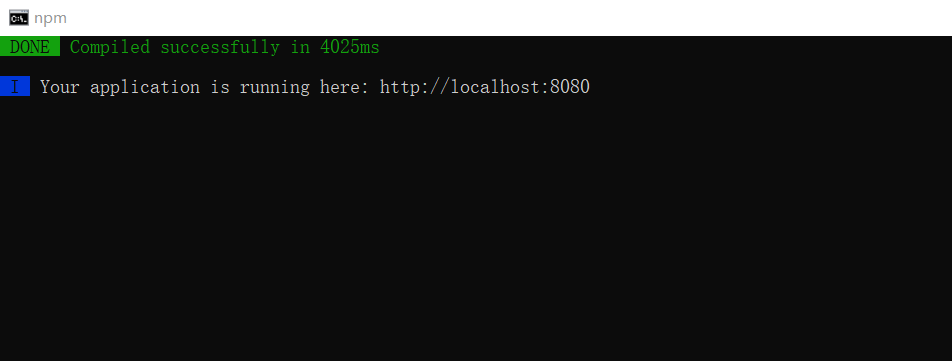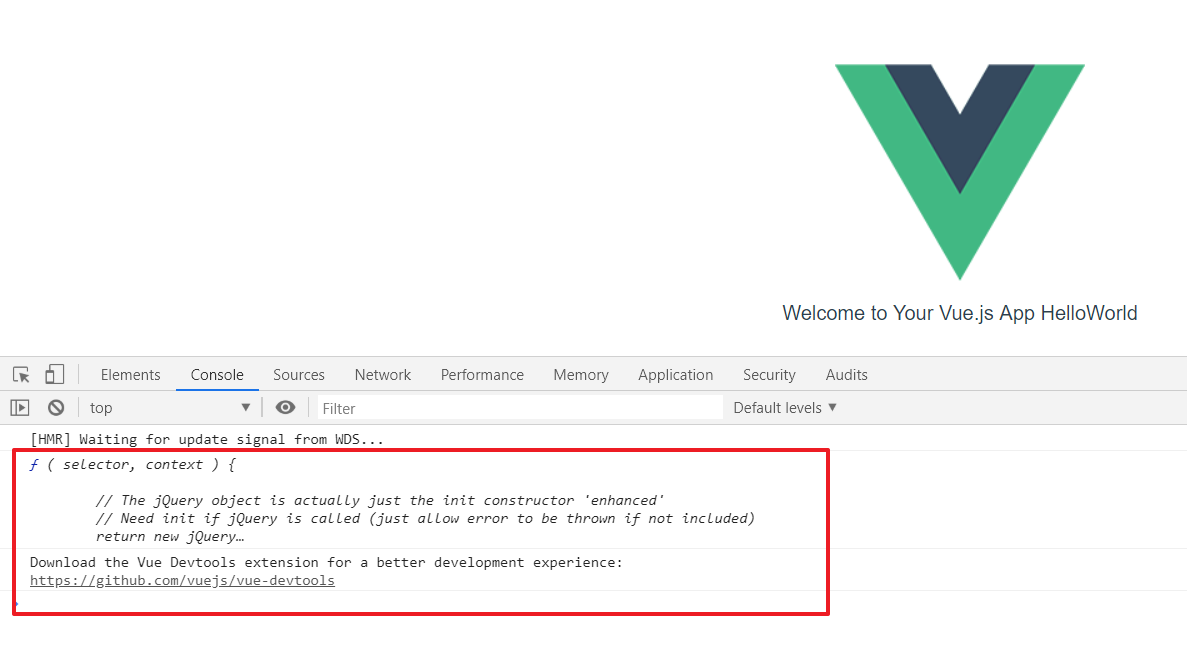Vue中如何引入BootStrap?
阿新 • • 發佈:2019-09-12
Vue如何引入BootStrap?
一、安裝 Node.JS
因為 Vue 依賴於 Node.JS ,所以先要安裝 Node.JS (至少8.9版本)
二、安裝 VueCli 工具
- 命令視窗 輸入
npm install -g @vue/cli安裝最新版 VueCli 工具 vue -V可檢視Vue版本npm install -g @vue/cli-init可拉取舊版本
三、建立專案
cd D:/VueProjectscd到所要建立的專案目錄下vue init webpack helloworld建立helloworld專案cd helloworldcd到專案根目錄npm installnpm start啟動專案

四、BootStrap
1、引入 Jquery
因為 BootStrap 依賴於 Jquery ,所以要想使用 BootStrap,必須先引入 Jquery
-
cd D:/VueProjects/helloworldcd到專案根目錄 -
npm install jquery -S下載jquery -
找到
build目錄下的webpack.base.conf.js檔案 -
加入以下語句:
var webpack = require('webpack') 和 // 增加一個plugins plugins: [ new webpack.ProvidePlugin({ $: "jquery", jQuery: "jquery" }) ], -
新增後文件如下:
'use strict' const path = require('path') const utils = require('./utils') const config = require('../config') const vueLoaderConfig = require('./vue-loader.conf') var webpack = require('webpack') function resolve (dir) { return path.join(__dirname, '..', dir) } module.exports = { context: path.resolve(__dirname, '../'), entry: { app: './src/main.js' }, output: { path: config.build.assetsRoot, filename: '[name].js', publicPath: process.env.NODE_ENV === 'production' ? config.build.assetsPublicPath : config.dev.assetsPublicPath }, resolve: { extensions: ['.js', '.vue', '.json'], alias: { 'vue$': 'vue/dist/vue.esm.js', '@': resolve('src'), } }, module: { rules: [ { test: /\.vue$/, loader: 'vue-loader', options: vueLoaderConfig }, { test: /\.js$/, loader: 'babel-loader', include: [resolve('src'), resolve('test'), resolve('node_modules/webpack-dev-server/client')] }, { test: /\.(png|jpe?g|gif|svg)(\?.*)?$/, loader: 'url-loader', options: { limit: 10000, name: utils.assetsPath('img/[name].[hash:7].[ext]') } }, { test: /\.(mp4|webm|ogg|mp3|wav|flac|aac)(\?.*)?$/, loader: 'url-loader', options: { limit: 10000, name: utils.assetsPath('media/[name].[hash:7].[ext]') } }, { test: /\.(woff2?|eot|ttf|otf)(\?.*)?$/, loader: 'url-loader', options: { limit: 10000, name: utils.assetsPath('fonts/[name].[hash:7].[ext]') } } ] }, // 增加一個plugins plugins: [ new webpack.ProvidePlugin({ $: "jquery", jQuery: "jquery" }) ], node: { // prevent webpack from injecting useless setImmediate polyfill because Vue // source contains it (although only uses it if it's native). setImmediate: false, // prevent webpack from injecting mocks to Node native modules // that does not make sense for the client dgram: 'empty', fs: 'empty', net: 'empty', tls: 'empty', child_process: 'empty' } } -
再 找到 main.js 檔案,加入以下語句:
import $ from 'jquery' -
測試 Jquery 是否安裝成功?
在HelloWorld.vue中新增:
<script> export default { name: 'HelloWorld', data () { return { msg: 'Welcome to Your Vue.js App HelloWorld' } }, created(){ console.log($) } } </script>啟動專案
結果:

2、引入BootStrap
-
npm install bootstrap --save-dev下載bootstrap -
再找到
main.js,新增以下語句:import 'bootstrap/dist/css/bootstrap.min.css' import 'bootstrap/dist/js/bootstrap.min.js' -
大功告成,可以愉快的在 Vue 中使用 BootStr
